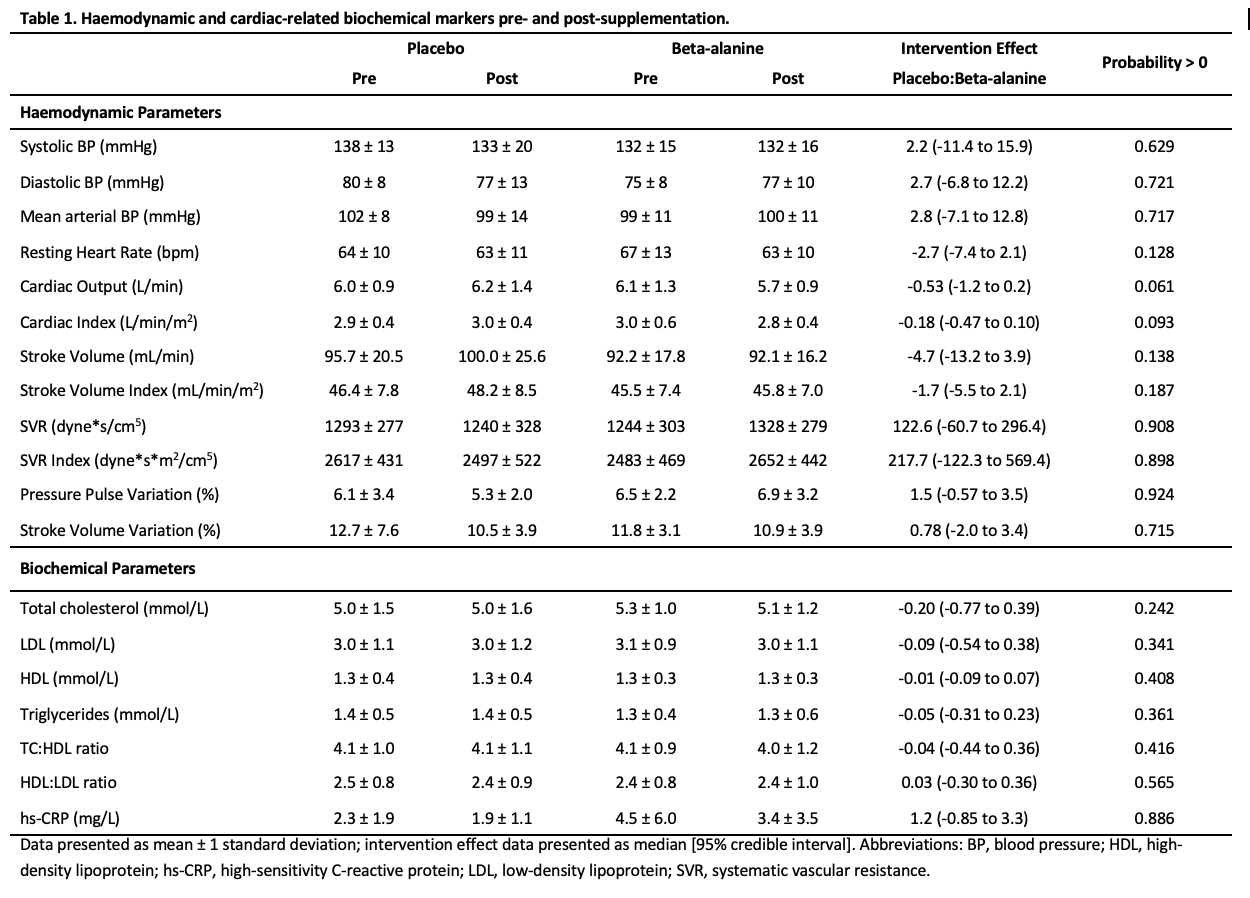Introduction
Overweight and obesity are major global public health concerns, associated with an increased risk of developing cardiovascular disease (CVD). Carnosine is a pleiotropic histidine-containing dipeptide synthesised from beta-alanine and L-histidine. Intramuscular carnosine content can be increased via supplementation with carnosine or its rate-limiting precursor beta-alanine (Harris et al., 2006). Emerging evidence in animal models suggests that carnosine may play a role in cardiovascular health by exerting beneficial effects on calcium handling and excitation-contraction coupling (Gonçalves et al., 2021), as well as haemodynamic parameters (Niijima et al., 2002; Aldini et al., 2011). Therefore, this study aimed to explore three months of beta-alanine supplementation on cardiovascular function and health in adults with overweight or obesity, exploring the potential influence on haemodynamic and biochemical markers.
Methods
Initially, 30 adults with overweight or obesity (BMI: ≥25 to <40 kg/m2) were enrolled on the trial, with 27 successfully completing the intervention. Participants were blinded and randomised (stratified for age, sex, BMI, and HbA1c) to receive 4.8 g.day-1 of sustained-release beta-alanine (n = 7 male, 7 female; age, 57 ± 11 y; BMI, 30.6 ± 2.9 kg/m2) or a taste and appearance-matched tapioca starch placebo (n = 8 male, 5 female; age, 59 ± 10 y; BMI, 31.6 ± 3.0 kg/m2) for 3 months. Non-invasive continuous haemodynamic measurements were performed on participants pre- and post-supplementation, using a CNAP Monitor which assessed continuous finger blood pressure, advanced haemodynamics, and dynamic fluid response parameters. Venepuncture was completed pre-and post-supplementation to measure lipid and CVD-related biomarkers, including total cholesterol, low-density lipoproteins, high-density lipoproteins, triglycerides and high sensitivity C-reactive protein. All procedures were conducted in accordance with the ethical standards of the NHS Health Research Authority and Nottingham Trent University research committees and the principles of the Declaration of Helsinki. Data were analysed using a Bayesian approach involving non-informative prior distributions, and estimation of posterior probabilities. Descriptive statistics are presented as mean ± 1SD; inferential data are presented as median [95% credible intervals (CrI)]. Trial preregistration: NCT05329610.
Results
Participants were supplemented for 87 ± 8 days in the beta-alanine group and 87 ± 4 days in the placebo group. For both biochemical and haemodynamic outcomes, results did not show clear evidence in favour or against supplementation. The descriptive and inferential statistics of these outcomes are presented in Table 1.
Conclusion
There was no clear evidence in favour or against three months of beta-alanine supplementation at 4.8 g.day-1on haemodynamic and biochemical markers of myocardial function and health in adults with overweight or obesity. A study with longer beta-alanine supplementation and/or in patients with established CVD comorbidities may be necessary to further explore any therapeutic potential of beta-alanine supplementation on cardiovascular and cardiometabolic parameters.

